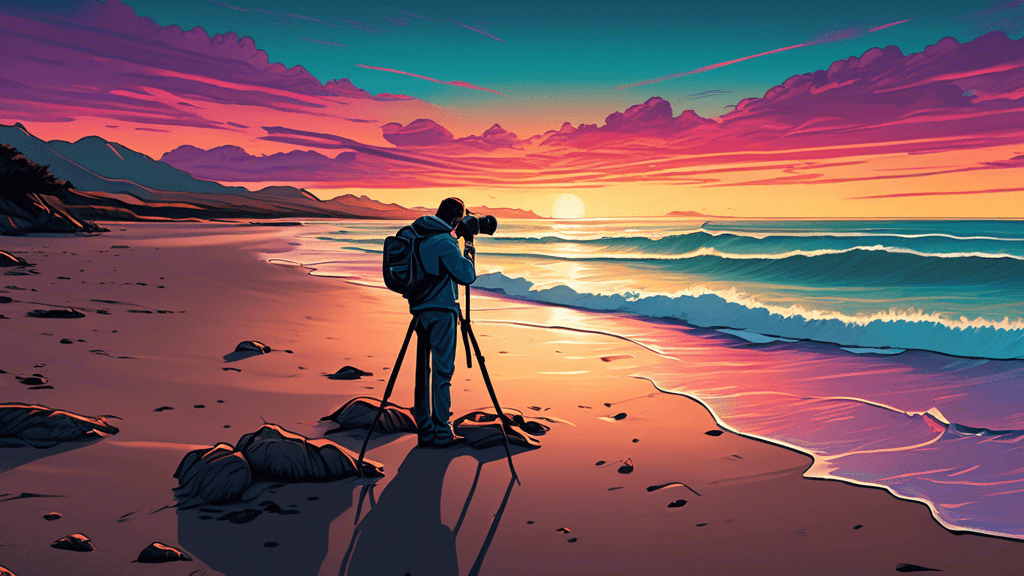
Capturing Aotearoa: Essential Tips for Seaside and Beach Photography
Share
Introduction to Seaside and Beach Photography in Aotearoa/New Zealand
Whether you're a seasoned photographer or a novice with a new camera, New Zealand’s expansive coastline provides a breathtaking backdrop for seaside and beach photography. With its unique blend of rugged cliffs, serene shores, and dynamic weather patterns, capturing the essence of Aotearoa's beaches can be as rewarding as it is challenging. This blog aims to guide you through the intricacies of beach photography, tailored especially for the magnificent scenery of New Zealand.
Understanding the Unique Landscape and Light Conditions
New Zealand's geographical position in the Southern Hemisphere presents unique lighting conditions that can dramatically affect the outcome of your photographs. The quality of light here can vary from the soft, diffused illumination of early mornings to the harsh, direct sunlight of midday.
- Golden Hour: Take advantage of the golden hour—the first and last hour of sunlight during the day. The sunlight during these times is generally softer, warmer, and more dynamic, providing excellent lighting for vibrant and textured shots.
- Blue Hour: The blue hour, which occurs just before sunrise and just after sunset, offers a cool, serene light that is perfect for capturing the tranquility of beach scenes.
Techniques for Capturing Dynamic Seascapes
Beach landscapes are dynamic. To effectively capture the movement and mood of the sea, you'll need to master a few technical skills.
Long Exposure Photography
Long exposure can transform a wave-tossed sea into a smooth, ethereal plane that contrasts dramatically with static elements like rocks or piers. This technique involves using a slower shutter speed to allow more light to enter the camera over a longer period, which blurs moving elements and sharpens stationary features. Consider these tips:
- Use a tripod to keep your camera stable.
- Employ a neutral density (ND) filter to manage the amount of light entering the lens, allowing for longer exposure times without overexposure.
- Experiment with shutter speeds: longer for smoother water, shorter to capture the texture and drama of the waves.
Dealing with Sand and Saltwater
Sand and saltwater can be hazardous to your equipment. Always keep your camera gear in a waterproof bag when not in use and use a UV filter to protect your lens from salty air and possible scratches. Professional photographers recommend regular maintenance checks to ensure your equipment remains in good working condition after exposure to harsh environments.
Composition Techniques for Capturing the Essence of the Beach
Composition in beach photography can dramatically affect the feel and story of your images. New Zealand's beaches offer unique elements that can serve as powerful focal points in your compositions.
- Leading Lines: Use the natural lines of the beach — the shoreline, a row of shells, or patterns in the sand — to draw viewers into your photo.
- Symmetry and Patterns: Reflective wet sand can mirror sky, creating symmetry and doubling the visual impact of clouds and color in your composition.
- Rule of Thirds: Place points of interest along the intersections of dividing the frame into thirds both horizontally and vertically to create more tension, energy, and interest in the composition.
Final Thoughts
Photographing the beaches of New Zealand is a way to connect more deeply with nature's beauty while practicing the art of seeing creatively through a lens. Every trip to the shore is a new opportunity to capture a unique moment of the ever-changing sea and sky.
The best thing about beach photography is that it's an art that lets you share your unique perspective of nature with others, observes renowned landscape photographer Ellie Thomas. Her work emphasizes the emotional impact of natural settings, a sentiment that echoes through many photographers' experiences with coastal New Zealand.
Call to Action
Armed with these tips and techniques, why not plan your next photography adventure to one of New Zealand’s stunning beaches? Capture the breathtaking sunrises, serene settings, and dynamic weather patterns. Remember, every picture you take not only improves your skills but also captures a moment of natural beauty for the world to appreciate. Share your experiences and let others see the beauty through your lens!





